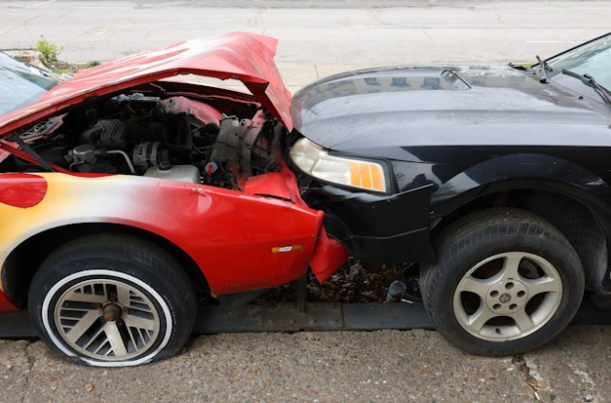Recovering After Workplace and Motor Vehicle Accidents

Accidents can drastically change the course of a person’s life, especially when they occur in the workplace or involve motor vehicles. From physical injuries and emotional trauma to financial stress and legal complications, the road to recovery is often long and complex. However, with the right approach and support, individuals can navigate this challenging period more effectively.
This article explores the key stages of recovery after workplace and motor vehicle accidents, the available support systems, and the steps you can take to protect your health, rights, and financial well-being.
Understanding the Nature of the Accidents
Workplace Accidents
Workplace accidents vary depending on the type of job and environment. Common incidents include:
- Slips, trips, and falls
- Machinery-related injuries
- Exposure to harmful substances
- Repetitive strain injuries
- Overexertion or lifting accidents
These injuries can result in temporary or permanent disability, affecting not just physical health but also a person’s ability to earn a living.
Motor Vehicle Accidents (MVAs)
Motor vehicle accidents are one of the leading causes of injury and death globally. They often result in:
- Whiplash and neck injuries
- Concussions and traumatic brain injuries
- Fractures and dislocations
- Spinal cord injuries
- Internal organ damage
The physical and psychological impact of MVAs can be severe, requiring immediate and long-term care.
Immediate Steps After an Accident
Regardless of whether the incident occurred at work or on the road, the first few hours and days following the accident are critical. Key steps include:
1. Seek Medical Attention
Even if injuries seem minor, it is crucial to get a full medical assessment. Some injuries, such as concussions or internal bleeding, may not be immediately visible.
2. Report the Incident
- For workplace accidents: Notify your employer or supervisor right away and complete an incident report.
- For MVAs: Report the collision to local law enforcement and your insurance provider. Ensure a formal report is filed.
3. Document Everything
Take photos of the accident scene, keep records of all medical treatments, and maintain a journal detailing your symptoms and recovery process. These documents are valuable if you need to file a claim or seek legal assistance.
Physical Recovery and Rehabilitation
Recovery from serious injuries often requires ongoing care. Depending on the severity, treatment may include:
1. Surgery and Hospitalization
For fractures, internal injuries, or severe trauma, surgery may be necessary. Post-operative care includes pain management, infection control, and wound healing.
2. Physiotherapy
Physical therapy is essential for regaining mobility, flexibility, and strength, especially in cases involving musculoskeletal injuries or nerve damage.
3. Occupational Therapy
This type of therapy helps individuals relearn daily tasks or adapt to new physical limitations, enabling them to regain independence in personal and professional settings.
Mental and Emotional Healing
Injuries aren’t always physical. Many individuals experience psychological effects such as anxiety, depression, PTSD (post-traumatic stress disorder), and chronic stress after an accident.
Supportive Steps Include:
- Counseling and Therapy: A mental health professional can provide coping mechanisms and emotional support.
- Support Groups: Sharing experiences with others who have gone through similar events can be therapeutic.
- Self-care Practices: Regular exercise, meditation, journaling, and proper nutrition can all contribute to emotional resilience.
Navigating Insurance and Disability Claims
The financial aftermath of an accident can be overwhelming. Most workers and drivers are entitled to some form of compensation through workplace insurance programs or automobile insurance.
1. Workplace Injury Claims
In Canada, workplace injuries are usually covered by the Workers’ Compensation Board (WCB) or a similar provincial authority. Benefits may include:
- Medical expense coverage
- Wage replacement
- Rehabilitation support
- Permanent disability benefits
2. Motor Vehicle Accident (MVA) Claims
If you are injured in an MVA, you may be eligible for:
- Accident benefits under your automobile insurance policy
- Medical and rehabilitation coverage
- Income replacement benefits
- Non-earner or caregiver benefits
For individuals facing long-term impairments, mva disability benefits may be available, offering additional support to those unable to return to work due to accident-related injuries.
Returning to Work After an Accident
Returning to work after an accident can be both a physical and psychological challenge. Whether it’s modified duties, reduced hours, or a different position altogether, the return-to-work process should be gradual and guided by medical professionals.
Tips for a Smooth Transition:
- Work With Your Employer: Discuss options for modified tasks or a phased return.
- Get Medical Clearance: Ensure your healthcare provider agrees that you are ready to resume work duties.
- Know Your Rights: Understand your entitlements under occupational health and safety laws and human rights legislation.
When Legal Help Is Necessary
In some cases, accident victims may encounter challenges such as:
- Denied insurance claims
- Inadequate compensation
- Employer retaliation or job loss
- Legal disputes with third parties
When this happens, consulting a lawyer specializing in personal injury or employment law is advisable. They can help ensure your rights are upheld and that you receive fair compensation for your injuries and losses.
Prevention: A Long-Term Goal
Recovery is not just about healing—it’s also about preventing future accidents. After going through a traumatic experience, many individuals become more safety-conscious and proactive in avoiding risk.
For Employers and Employees:
- Regular workplace safety training
- Proper use of personal protective equipment (PPE)
- Hazard reporting systems
- Ergonomic assessments
For Drivers:
- Avoid distractions and impaired driving
- Follow speed limits and traffic laws
- Maintain vehicle safety standards
- Take defensive driving courses
Final Thoughts
Workplace and motor vehicle accidents can disrupt lives in an instant. Recovery is rarely a straight path—it involves medical treatment, emotional healing, financial management, and sometimes legal advocacy. However, with the right steps, support, and mindset, it is possible to overcome the challenges and rebuild a fulfilling life.
Understanding your rights, accessing the proper benefits, and staying committed to your health are the pillars of a strong recovery journey. If you or someone you know is recovering from such an event, don’t hesitate to seek medical, legal, and emotional support. Healing may take time, but with persistence and care, the road forward can lead to a better, more empowered future.




